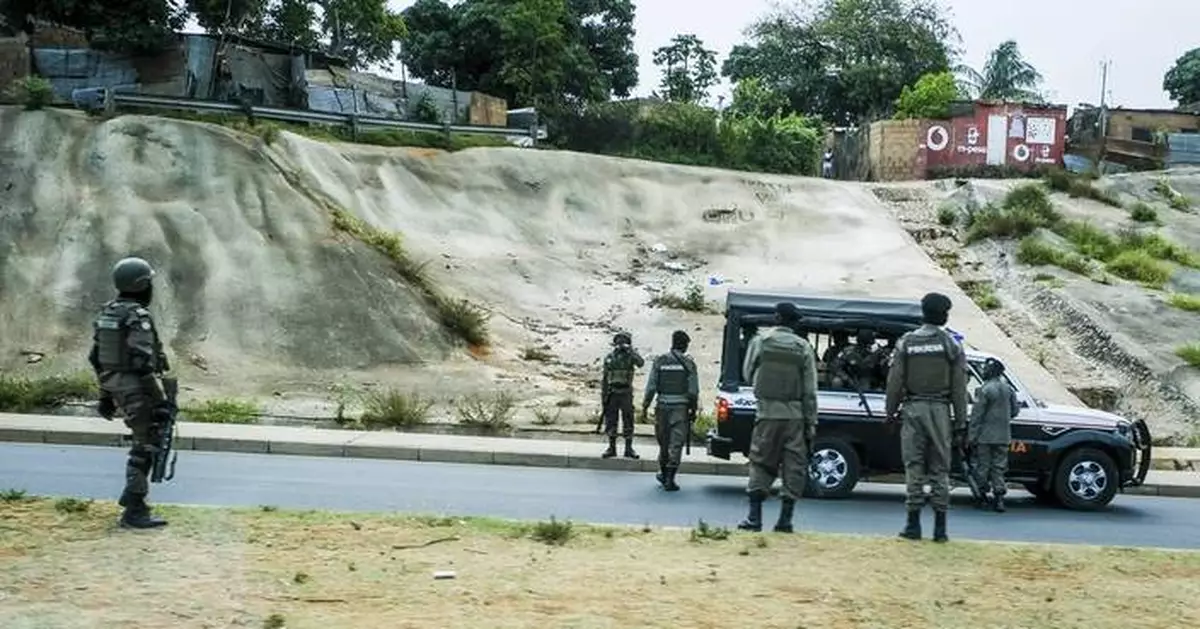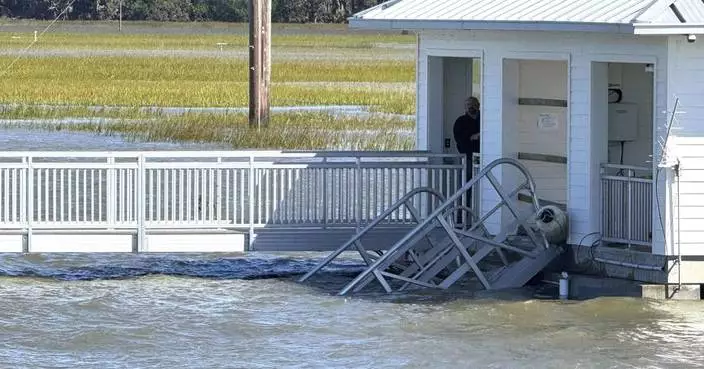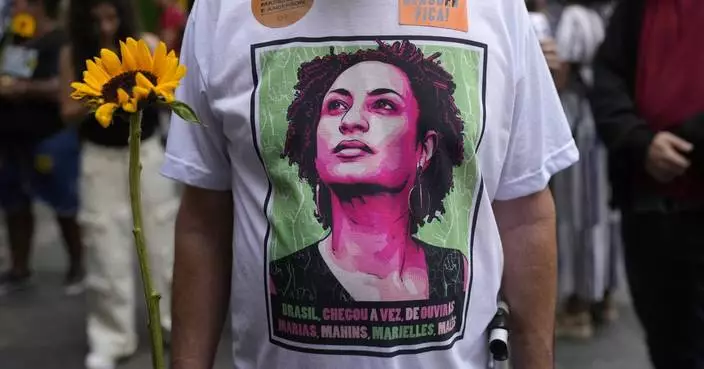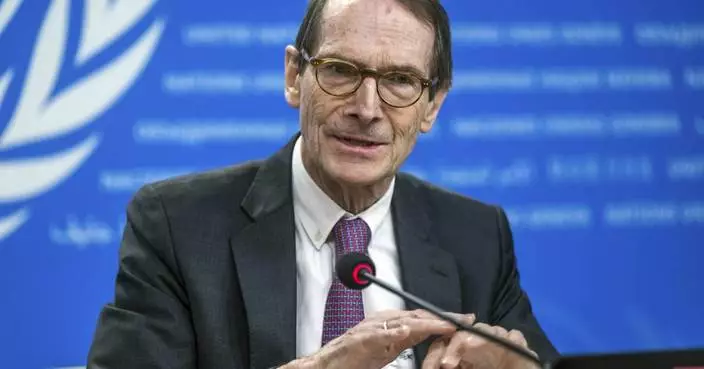MAPUTO, Mozambique (AP) — At least 10 people were fatally shot by police and dozens of others were injured when authorities cracked down on unrest following Mozambique's presidential election, two medical groups said, as the country braced Thursday for more protests against a vote criticized as fraudulent by opposition parties and questioned by international observers.
Daniel Chapo of the ruling Front for the Liberation of Mozambique was announced as the winner of the election on Oct. 24, extending the Frelimo party's 49 years in power since independence from Portugal in 1975. Chapo is to succeed President Filipe Nyusi, who is stepping down after serving the two terms allowed under the constitution.
Frelimo has regularly been accused of rigging elections and Mozambique's security forces have previously been criticized for suppressing protests with deadly force. Opposition parties claimed fraud on the day of the election, while observers from the European Union said in a later report that there were irregularities in the vote counting and some results had been altered.
Tensions were high in the southern African country in the buildup and immediate aftermath of the Oct. 9 vote, but more unrest was stoked when two senior officials of an opposition party were killed in their car in the capital, Maputo, on Oct. 18 after being ambushed by unidentified gunmen late at night. The opposition says the attackers fired 25 bullets at the car.
The killings were widely seen in Mozambique as being politically motivated. One of the victims was the lawyer and adviser to Venancio Mondlane, the main opposition candidate for president who was second in the election.
Ten people died of gunshot wounds and another 63 were wounded by gunfire in protests between Oct. 18 and Oct. 26, the Medical Association of Mozambique and the Mozambique Order of Doctors said in a joint statement Wednesday. “In most of the shootings, especially those that resulted in death, the intention of the police was to shoot to kill," Gilberto Manhiça, the head of the Order of Doctors, was quoted as saying by local media.
In a separate statement, Human Rights Watch put the death toll at 11. It said more than 50 people sustained serious gunshot wounds in the protests and called for an investigation into the “apparently excessive use of force."
Amnesty International said police also fired on a peaceful opposition rally in the city of Nampula on Oct. 16, injuring at least one person, and “repeatedly attacked” protesters during the post-election demonstrations.
Protesters burned tires and blocked roads in some cities and authorities characterized some of the unrest as violent that had to be quelled. Police spokesperson Orlando Mudumane told state-run Radio Mozambique that the situation was now “relatively calm and controlled.”
Opposition leader Mondlane has called for a week of new protests to begin on Thursday.
AP Africa news: https://apnews.com/hub/africa
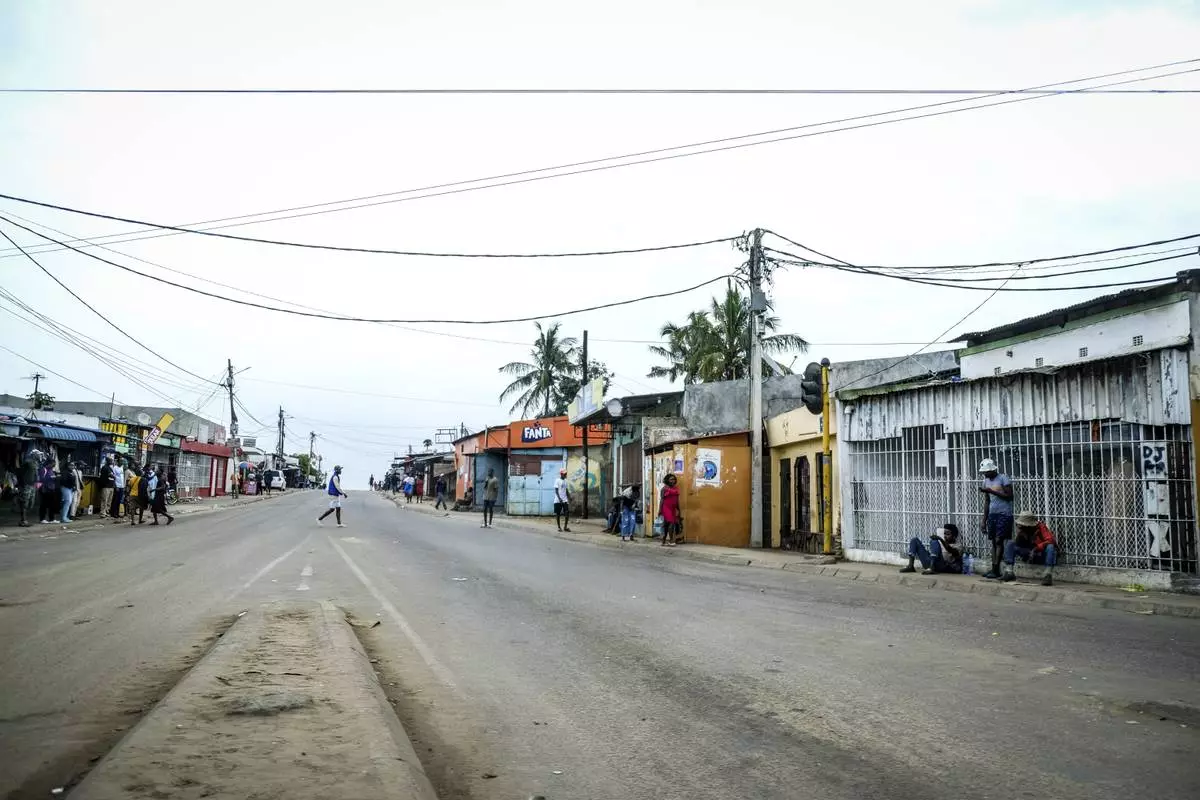
A lone man crosses the empty streets of Maputo, Mozambique, Monday, Oct. 21, 2024, during a nationwide shutdown protest following a disputed Oct. 9 election. (AP Photo/Carlos Uqueio)

Mozambican police deploys in the streets of Maputo, Mozambique, Monday, Oct. 21, 2024, during a nationwide shutdown protest following a disputed Oct. 9 election. (AP Photo/Carlos Uqueio)
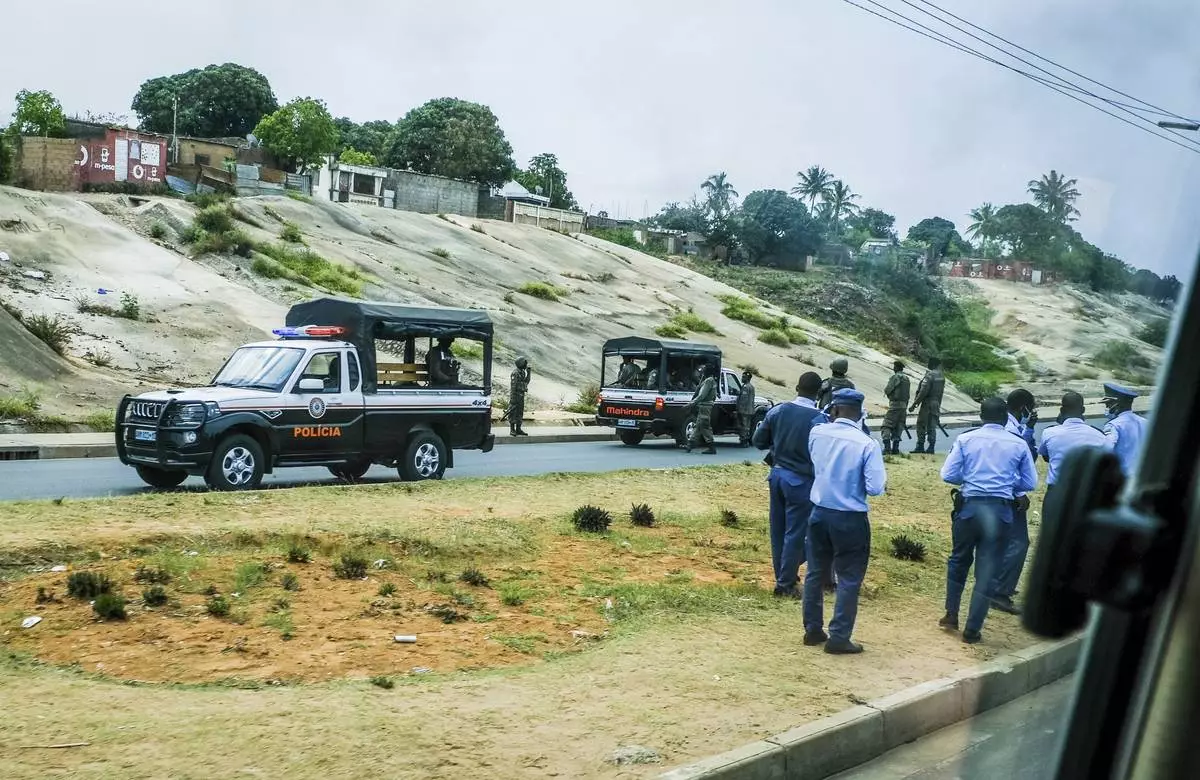
Mozambican police deploys in the streets of Maputo, Mozambique, Monday, Oct. 21, 2024, during a nationwide shutdown protest following a disputed Oct. 9 election. (AP Photo/Carlos Uqueio)
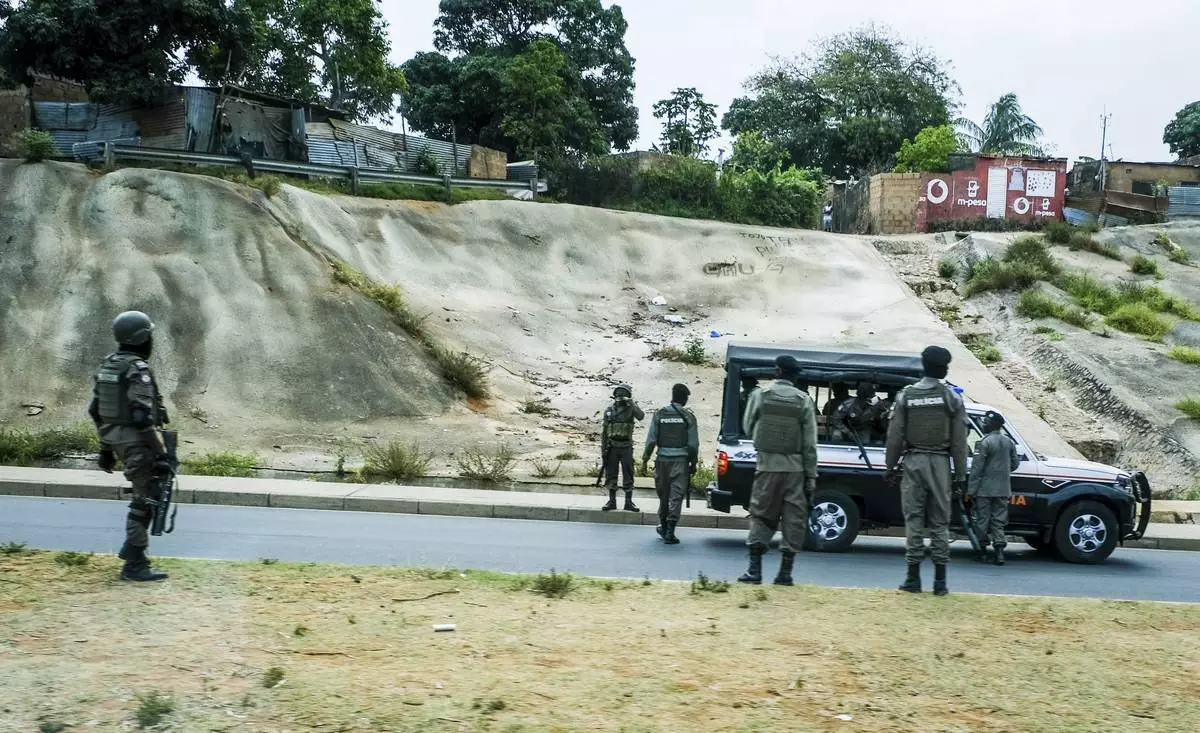
Mozambican police deploys in the streets of Maputo, Mozambique, Monday, Oct. 21, 2024, during a nationwide shutdown protest following a disputed Oct. 9 election. (AP Photo/Carlos Uqueio)
SEOUL, South Korea (AP) — North Korea on Friday bragged of its recently tested new intercontinental ballistic missile, calling it “the world’s strongest,” a claim viewed by outside experts as propaganda though the test showed an advancement in the North's quest to build a more reliable weapons arsenal.
A missile launched by North Korea on Thursday flew higher and stayed in the air for a longer duration than any other weapon the country had so far fired. It signaled that the North has achieved progress in acquiring a nuclear-armed ICBM that can hit the U.S. mainland. But foreign experts assess that the country has still a few remaining technological issues to master before acquiring such a functioning ICBM.
On Friday, the North’s Korean Central News Agency identified the missile as “Hwasong-19” ICBM and called it “the world’s strongest strategic missile” and “the perfected weapon system.”
KCNA said leader Kim Jong Un observed the launch, describing it as “an appropriate military action” to express North Korea’s resolve to respond to its enemies’ moves that escalated tensions and threats to North Korea’s national security. It said Kim thanked weapons scientists for demonstrating North Korea’s “matchless strategic nuclear attack capability.”
South Korea’s military earlier said that North Korea could have tested a solid-fueled missile but Friday’s KCNA dispatch didn’t say what propellant the Hwasong-19 ICBM uses. Observers say the color of exhaust flames seen in North Korean media photos on the launch still suggest the new ICBM uses solid fuels.
Before Thursday’s test, North Korea’s most advanced ICBM was known as the “Hwasong-18” missile which uses solid fuels. Pre-loaded solid propellants make it easier to move missiles and require much less launch preparation times than liquid propellants that must be fueled before liftoffs. So it’s more difficult for opponents to detect launches by solid-fuel missiles.
In recent years, North Korea has reported steady advancement in its efforts to obtain nuclear-tipped missiles. Many foreign experts believe North Korea likely has missiles that can deliver nuclear strikes on all of South Korea, but it has yet to possess nuclear missiles that can travel to the mainland U.S.
There are questions on whether North Korea has acquired the technology to shield warheads from the high-temperature, high-stress environment of atmospheric reentry. Many foreign analysts say North Korea also must have improved altitude control and guidance systems for missiles. They say North Korea needs an ability to place multiple warheads on a single missile to defeat its rivals’ missile defenses.
All of North Korea’s known ICBM tests, including Thursday’s, have been performed on steep angles to avoid neighboring countries. South Korean military spokesperson Lee Sung Joon said Thursday that a high-angel trajectory launch cannot verify a missile’s re-entry vehicle technology, though North Korea has previously claimed to have acquired that technology.
Observers say that Thursday's launch, the North's first ICBM test in almost a year, was largely meant to grab American attention days before the U.S. presidential election and respond to international condemnation over North Korea's reported dispatch of troops to Russia to support its war against Ukraine.
North Korea's reported troop dispatch highlights the expanding military cooperation between North Korea and Russia. South Korea. the U.S. and others worry North Korea might seek high-tech, sensitive Russian technology to perfect its nuclear and missile programs in return for joining the Russian-Ukraine war.
__
Associated Press writer Kim Tong-hyung contributed to this report.
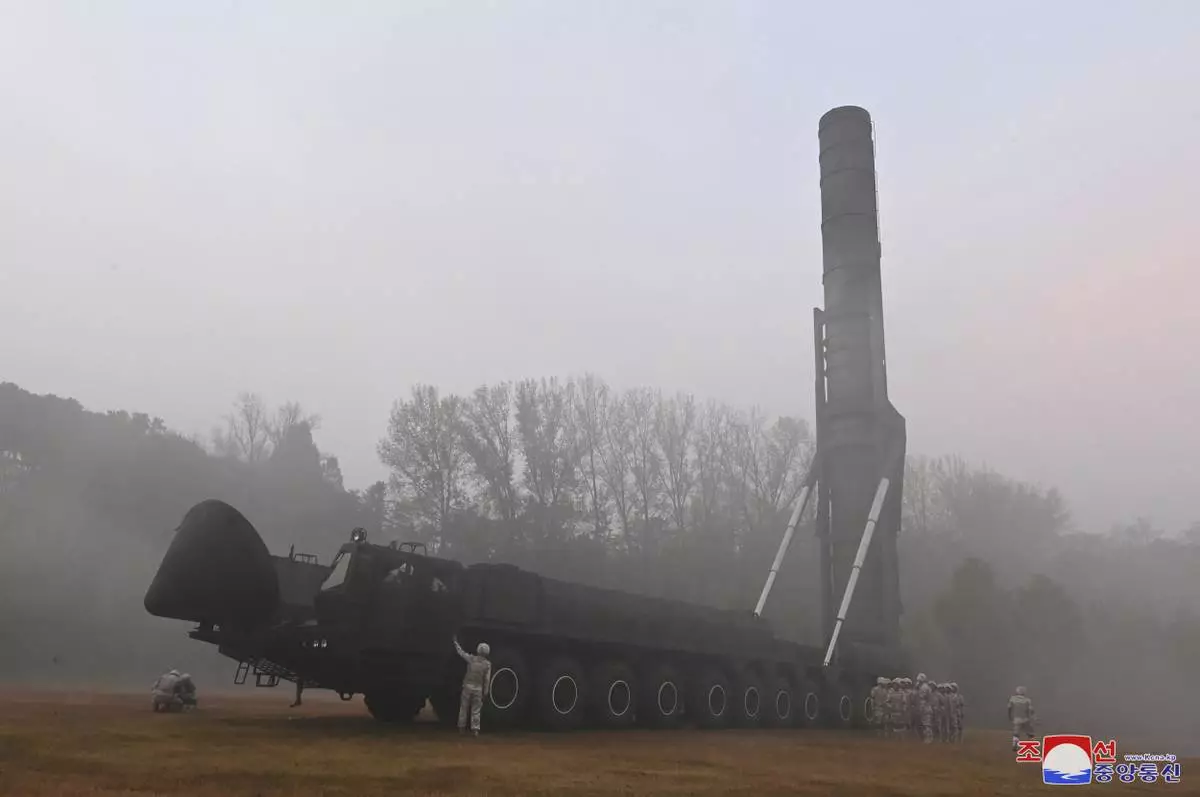
This photo provided by the North Korean government, shows what it says a test launch of new intercontinental ballistic missile "Hwasong-19" at an undisclosed place in North Korea Thursday, Oct. 31, 2024. Independent journalists were not given access to cover the event depicted in this image distributed by the North Korean government. The content of this image is as provided and cannot be independently verified. Korean language watermark on image as provided by source reads: "KCNA" which is the abbreviation for Korean Central News Agency. (Korean Central News Agency/Korea News Service via AP)

This photo provided by the North Korean government, shows what it says a test launch of new intercontinental ballistic missile "Hwasong-19" at an undisclosed place in North Korea Thursday, Oct. 31, 2024. Independent journalists were not given access to cover the event depicted in this image distributed by the North Korean government. The content of this image is as provided and cannot be independently verified. Korean language watermark on image as provided by source reads: "KCNA" which is the abbreviation for Korean Central News Agency. (Korean Central News Agency/Korea News Service via AP)
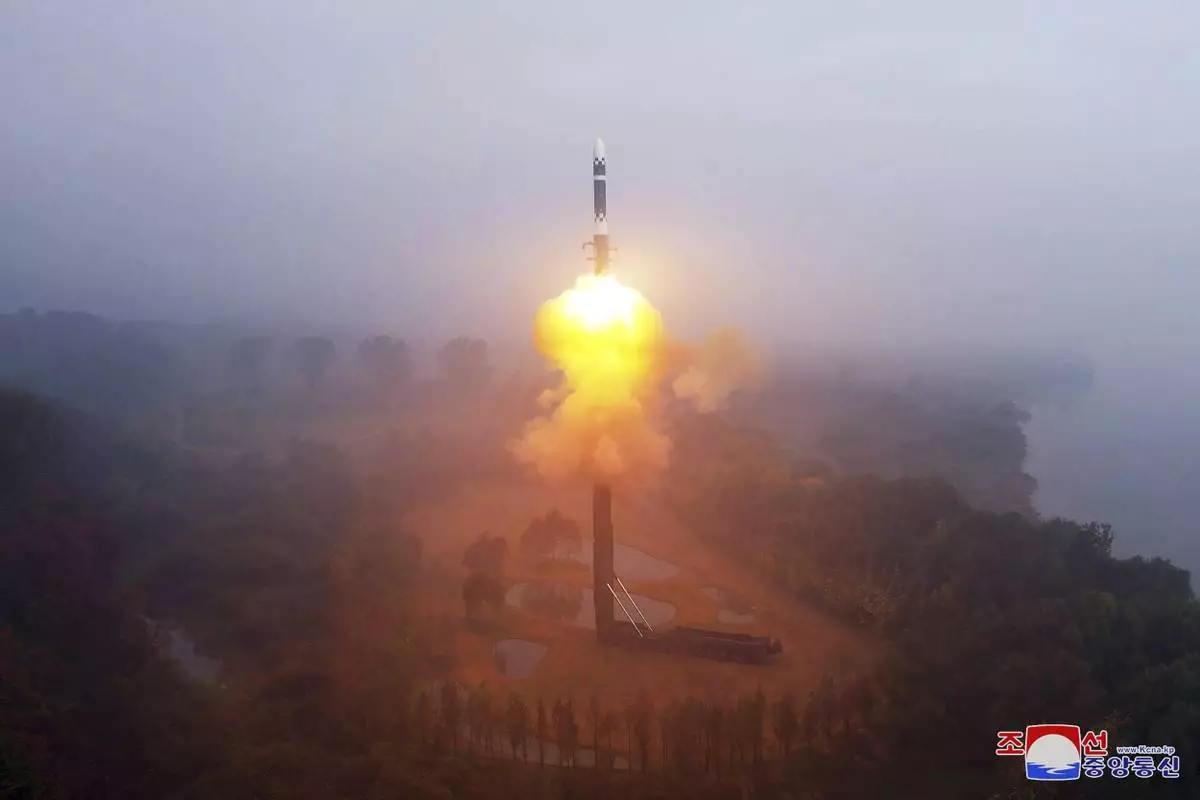
This photo provided by the North Korean government, shows what it says a test launch of new intercontinental ballistic missile "Hwasong-19" at an undisclosed place in North Korea Thursday, Oct. 31, 2024. Independent journalists were not given access to cover the event depicted in this image distributed by the North Korean government. The content of this image is as provided and cannot be independently verified. Korean language watermark on image as provided by source reads: "KCNA" which is the abbreviation for Korean Central News Agency. (Korean Central News Agency/Korea News Service via AP)






